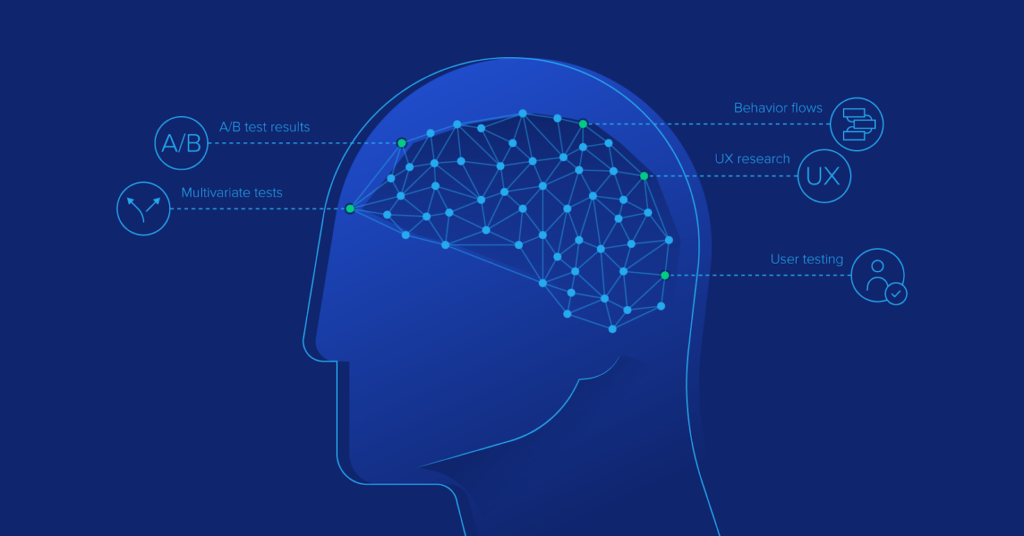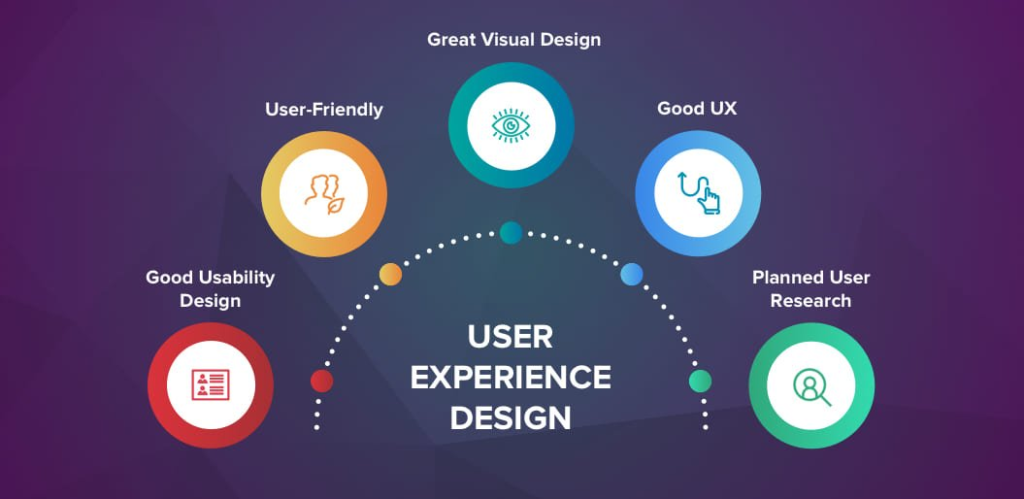
Table of Contents
- The Impact of Data on UX Design
- How to Become a UX Researcher?
- How to Become UX Designer?
- UX Design Tips and Tricks
- Key Takeaways
- Conclusion
- FAQs
When you are thinking ‘how to become UX designer’ – it’s mainly for the excellent image associated with the job profile or the handsome pay grade. But design – being a combination of functionality and aesthetics – influences many actions. When it comes to UX design, the niche becomes more specialized and has an indelible impact on our consumerist culture, action trends, and how we perceive brands.
In a way, UX is often implemented on a brand page in the most formidable manner or an immensely compelling way. This lures unsuspecting, incoming traffic to get converted into buyers. These buyers may eventually become loyal customers and stay committed to the business, its ideology, mission, and vision forever.

There’s an interesting excerpt from the celebrated writer cum UX designer Steve Krug’s UX Design book ‘Don’t Make Me Think.’ He says, Making every page or screen self-evident is like having good lighting in a store, it just makes everything seem better.
Suppose you’re interested in building a brand from scratch and contributing to its greatness. In that case, we’ll answer all pertinent questions like how to become a UX researcher, how to get into UX design, whether the data-driven UX ecosystem is worth it, and more below.

The Impact of Data on UX Design
According to the great Australian-American educator Peter Drucker, What’s measured, gets managed. Numbers have an important story to tell.
Solely relying on your gut feelings or your industry-leading best practices might have severe implications on the results of a design project. That’s why amongst the top UX tips and tricks lies considering numbers to make a fail-safe move towards the intended UX design project.
Changing the UX design based on instincts could cost a lot of money and render the ultimate design ineffective. Therefore, using data effectively for UX Design has been considered a benchmark for those who define the critical UX tips and tricks and judge how good the UX portfolio of a practitioner or a designer is.
According to Forbes, if your sole drive is how to get into UX design, then you should consider the following data:
- Customer analytics (including customer satisfaction)
- Web analytics
- Social media analytics
- Customer/client acquisition
- Lifetime value
- Sales channels
- Segmentation
- Customer engagement
- Customer churn analytics
According to a whitepaper created in association with Google 360 Suite, the MIT Technology Review team discussed that companies that leverage data analytics and machine learning reap a lot of competitive advantage compared to their industry-level peers.

The research finds that businesses in the top third of their industry when it comes to data-driven decision-making beat their competitors by a clean 5% when it comes to productivity and 6% when it comes to profitability.
You might be wondering – what does data have to do with how to get into UX? Let’s clarify why your UX portfolio tips need to be rounded off with a robust data-driven advantage and neat analytics to display those.
When it comes to delivering competitive advantage and encountering a financial windfall through data-driven UX techniques, the famous e-commerce website Music & Arts stands as a prime example. Although it might seem that an e-commerce website redesign is just about using an amalgamation of frontend and backend techniques to build one, its prime focus is to provide a pleasant shopping experience to the users.
As a result, Music & Arts employed usability testing data and heuristic evaluation to execute the project, resulting in a more than 30% increase in year-on-year sales.
How to Become a UX Researcher?
If your mind has been revolving around how to get into UX, then you might have realized the importance of data shaping your UX portfolio. Since data-driven UX design is an amalgamation of both art and science, designers ignoring this data suffer from the ‘false-consensus effect.’ In this situation, the designer projects their thought patterns, behaviors, and reactions onto users and makes decisions on their behalf.
Although UX tips and tricks and design decisions reflect their own experiences and thoughts, UX researchers must validate their hypotheses and assumptions on what solutions work for the users by predicting user behavior with data. Data can be the focal point that enables your design thinking to converge on UX design parameters, from user preferences to their likes/dislikes, how they interact with digital devices and their choice of products.
According to the UX researcher and former head of design at Google, Yahoo, and Udacity, Irene Au iterates it brilliantly, What we make embodies our values and virtues, and becomes a tangible expression of our self.

Thus, if you are thinking of how to become a UX researcher, you have to study user behaviors, thoughts, expressions, and every other tangible heuristics that define them with the use of data. For this, you need not just think about how to get into UX design. There is a lot more data and analytics involved than just reshaping art and invoking functionality in it. You need to be good at:
1. Data gathering procedures
These involve creating a formal hypothesis for a UX project, ensuring sufficient sample size so that the hypothesis isn’t rendered insignificant, and finally, eliminating the confounding variables with minor attributes to the project.
2. UX Data collection techniques
These include collecting both quantitative and qualitative data.
- Quantitative data collection procedures involve surveys, A/B testing, heat maps, and data analytics using credible online or offline tools.
- Qualitative data collection techniques involve understanding user journeys and user behavioral flows and identifying with them, conducting in-depth interviews, and competitor analysis amongst industry peers.
Once all the above steps are implemented successfully, you can become a UX researcher and establish your UX design theory.
How to Become UX Designer?
UX is about making the predictable seem magical. As uttered by one of the most prolific usability designers, Patric Neeman, the above sentence summarizes a data-driven UX designer.
If you are still wondering how to get into UX and thinking about how all that data could make a difference in your career, you might have drifted in career choice.
When it comes to thinking about how to get into UX design, data – in the form of bars, charts, histograms, graphs, lines, etc.- lays down the canvas’s foundation. On this, you can depict one of the most tangible use cases of design, something that will help organizations earn massive ROI and help users go about their desired purchase actions seamlessly.
Since designers usually lack the background in statistics and analytics, they have to figure out how to incorporate all the usability of data in their design process and create something infallible that renders maximum design effectiveness and minimizes monetary loss. According to Jared Spool, as designers, we need to accept and embrace the world of metrics and use their amazing powers to change the way we are doing things.
Thus, a data-driven UX designer needs to have the following attributes:
1. Access to user data
It’s often re-routed through other departments with cross-functionality in the case of large organizations. Still, in small and medium organizations, the designer has to get hold of the relevant data himself.
2. Ability to have the essential UX philosophy of data-driven design thinking
It involves establishing realistic goals for the entire UX design project and considering branding, design ethics, and reputation while testing the design results.
3. Ability to discern between data-driven, data-informed, and data-aware design
When you think about how do I become a UX designer, you must first solidify your footing. While the data-driven design is solely based on a quantitative approach and consequential results, the data-informed design is a more flexible procedure focusing on instincts, experience, and other qualitative information. Finally, the data-aware design technique is equal weightage to qualitative and quantitative design principles, approaches, and factors.
4. Best practices
To gather data procedures and other data collection techniques, most of which have been discussed above in detail.
UX Design Tips and Tricks
With adequate knowledge on the procedure on how to become UX designer and leveraging data properly in becoming a responsible and credible data-driven UX designer, you need to know some important UX tips and tricks up your sleeve.

1. Don’t reinvent the wheel
The prima facie of UX design is user engagement. However, people who are enthusiastic about how to get into UX often disrupt the conventional by trying to reinvent the engagement wheel.
It refers to changing things that are not broken or don’t need a fix – making odd color schemes, introducing unorthodox typefaces, needless layouts, etc. The mentality of reinventing the wheel often destabilizes the ‘psychology of perpetual habit’ of the user, and it might deter user engagement rather than augmenting it.
2. Keep it simple
When a UX designer over-complicates things or introduces too many elements, it could instantly turn off a user. Thus one of the basic UX tips and tricks is to keep things simple. This can be done by rendering only the useful information on each page, practicing responsive design, conveying the purpose of every page and design element to the user without any explanation, and putting any additional information at the bottom of the designed page.
3. Make the design elements visually distinct
When you ask yourself, how do I become a UX designer, the first thing that should come to mind is enabling the users to take action effortlessly. Thus, your first step should be to understand your target audience – their demands and needs and how they interact with your design elements to fulfill those needs.
Second, the design elements need to be visually distinct, attractive and stand out – so that the intended user can easily find out their need and fulfill it by utilizing the visually appealing action area/site.
Key Takeaways
- Data-driven UX design can positively impact a business, help establish a brand from scratch, and make its products/services recognizable to people.
- Data has an immense impact on UX design, from minimizing the upkeep of products to maximizing user experience and profitability of the organization.
- Becoming a UX researcher follows the same flow-chart as that of any researcher. You simply need to understand the elements that influence UX design the most and then investigate those elements using traditional and off-beat methods.
- To become a UX designer, you need to execute the methods iterated by UX researchers into tangible projects. The driving force, however, should be user engagement and user satisfaction.
- Following specific UX design tips and tricks will only bolster and strengthen the UX portfolio of someone new to the entire process of UX Design.
Conclusion
Design is the perfect amalgamation of art and science in the ideal proportions. The functionalities of innovation are not compromised while rendering the aesthetics that appeal to the users. In such cases, every designer should have the perfect psychology to test their design results under variable circumstances and be patient with the outcomes.
Not only is it essential to monitor the impacts of the data-driven UX design changes on the market or the users, but also important to keep a tab on the related technologies and design trends. Since design trends often reflect the societal culture and values, they are subject to change. However, the qualitative and quantitative data should equip the UX designers to create the most optimized design modules and ensure maximum user satisfaction.
FAQs
Data-driven UX design methods use two approaches – quantitative and qualitative. Quantitative approaches include usability testing, user behavioral flows, tracking analytics, monitoring, surveys, etc. Qualitative approaches include competitor analysis, heuristic evaluations, etc. Both of these apply to websites, mobile applications, and other interfaces that users frequently visit.
For successful data-driven design decisions about a product, you can do the following :
– Use heatmaps or image visualization tools to gauge the users’ usage of those products.
– Conduct online and offline surveys to gather multiple quantitative data.
– Pretend you’re a user or create another user persona and understand the user psychology when using the product.
– Run A/B Testing and use the results.
– Investigate multiple data like drop-off rates, exit rates, bounce rates, click-through rates, etc., to understand the user psychology.
You should maintain consistency of the user flow throughout the product design journey. Try to keep things simple, don’t overcomplicate by introducing flashy and unnecessary UX design elements. However, understand the target audience’s needs and demands and make the important UX elements visually striking. Lastly, practice responsive design.
If you are thinking about how to become a UX researcher, then you need to be familiar with the following data collection methods:
– User surveys
– Usability tests
– Interviews with existing and prospective users
– Market research and insights from similar products
– Benchmark set by industrial competitors
– Internal feedback from multiple stakeholders in the company
– Net promoter score
– Textual feedback from the users
– Tracking events
UX design is the personal, internal experience that customers go through while sampling a product’s interface or using it for an intended product purchase or service.
For example, if a customer wants to buy a pair of shoes from a fashion website, but the cart takes a long time to load and show its contents, the customer might leave the website altogether and migrate to a competitor’s online fashion store.
Latest Blogs
Explore how Google’s 2025 AI search updates triggered ranking chaos. Learn actionable strategies to adapt your SEO for AI Overviews, zero-click searches, and SERP volatility. Stay ahead now.
Learn how to rank on AI search engines like ChatGPT, Perplexity, and Gemini by optimizing your content for authority, structure, and relevance. Stay ahead in AI-driven search with this strategic guide.
Explore the best healthcare SEO services for your medical practice. Improve online visibility and effectively reach more patients in need of your services.
Get your hands on the latest news!
Similar Posts

Design
7 mins read
15 Best Firms Offering Design Services in India

Design
5 mins read
All You Need to Know About Data-Driven Design

Design
6 mins read